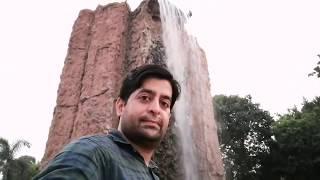【4K】日本 HIROSHIMA PEACE MEMORIAL PARK - HIROSHIMA - Japan 2020 Guide
Description
00:00- INTRO
00:23- The Memorial Tower completed in 1967 and dedicated to the mobilized or deployed Students used for the labor shortage in Japan. In 1944 the Japanese government enacted the Student Labor Service Act requiring all middle school and high school students to participate in the labor service such as at the factories. By the end of that year, students were participating in the buildings demolition program and during the war, approximately 10,000 students died from which over 6,000 died from the A-bomb. After the Second World War, the survived families of these students donated funds to build the Memorial Tower.
09:11- The Motoyasu Bridge spans over the Motoyasu River. The original bridge was built over 400 years ago and then rebuilt in 1926. Surprisingly, this bridge and the girders, that is the steel beams, survived the atomic blast from the Little Boy in 1945. The railings however, were blasted into the river. This bridge was used for the next 40 years afterwards. It was then rebuilt in 1989 and completed in 1992.
09:43- In the distance, you can see the Atomic Bomb Memorial or the Genbaku Dome.
10:08- The Children’s Peace Monument. Many Japanese including kids were exposed to the radiation from the Atomic Blast. In this tragic story, Sasaki Sadako who was just two years old was one of them. Due to the exposure and the side effects, Sasaki Sadako was diagnosed with leukemia 10 years after the blast. During her long 8 months battle with leukemia, based on the traditional belief, Sasaki Sadako folded 1,000 origami cranes in hopes of recovering. She ended up folding over 1,300 origami cranes frequently from the paper wrappings of her medicine. After her 8 months long battle she passed away shocking her elementary school classmates. As a result, many different schools around Japan raised money and built the Children’s Peace Monument completing it on the Children’s Day on May 5th of 1958 in the memory of all the kids who died from the Atomic Bomb. Today, the visiting school kids often bring origami cranes to this monument.
11:42- The Atomic Bomb Memorial Burial Mound build in the memory of the unknown people who died from the blast. A vault laying underneath the Mound holds ashes of 70,000 unclaimed victims whose entire families either perished or are unknown. Every year, the city of Hiroshima publishes a list of newly identified unclaimed victims in hopes that a family member would recognize the name and claim the ashes.
12:13- The Atomic Bomb tower dedicated to folding cranes.
12:49- The Korean Atomic Bomb Victims Cenotaph was erected in 1970 by the local Koreans of Hiroshima at the western end of the Honkawa Bridge. The Korean victims known as the hibakusha account for ~10% of all of the A-Bomb victims and this monument was dedicated to those victims and survivors. You can see that the monument stands on the turtle’s back and is engraved with the – “souls of the dead ride to heaven on the backs of turtles." At the top, there are two dragons. Later a controversy sparked to move this monument inside the Peace Memorial Park when eventually in 1999 it was finally moved.
14:37- The Heiwano Kannon statue or the Kannon statue of peace, it was constructed in the year of 1956 for the lost town and its victims.
17:03- The Hiroshima Peace Memorial Museum. More about it later.
17:38- The Hiroshima Victims Memorial Cenotaph standing in the Hiroshima Pond of Peace was designed in 1952. The roof that resembles an ancient Japanese clay house to shelter all the victims’ souls from the rain. On the memorial it says “let all the souls here rest in peace, for we shall not repeat the evil.” A stone chamber inside the monument with the names registry of all of the victims that died.
19:04- The Hiroshima National Peace Memorial Hall. Through this opening, you can see the ruins, roof tiles, and other objects from the A-bomb. The monument in the distance is the clock with the time frozen at exactly 8:15 am depicting the time the Atomic bomb went off on August 6th of 1945.
20:32- The admission to the Hiroshima National Peace Memorial Hall is free. You cannot film inside. Nevertheless, inside you will find the victims’ information area and the Hall of Remembrance which is a 360 degrees panoramic view of the obliterated city of Hiroshima depicted using 140,000 tiles representing an estimated # of the Japanese that died by the end of 1945.
21:27- The Hiroshima Peace Memorial Park’s main facility is the Hiroshima Peace Memorial Museum which is made up of the 2 connected buildings. Inside you will find a detailed history of the Hiroshima A-bomb events and the personal stories on the day of the blast. You will also see preserved clothing and personal items from the day of the Atomic bomb explosion. Some things that you will find inside are in fact graphic.
23:38- The Arashi no Naka no Boshi Statue stands in front of the Hiroshima Peace Memorial Museum.
24:47- PREVIEW** The Hiroshima City center.





















Comments